
How to build handmade concrete waterfall, by adding a waterfall to your garden pond. It isn’t just about the serene sound of flowing water. It’s also a fantastic way to aerate the water, and if you have a pond, it’s keeping the ecosystem healthy. When planning your waterfall, think of it as a centerpiece—something that adds not only functionality but also aesthetic charm to your garden.
I/We promote transparency. This post or site may contain affiliate links. This means only if you make a purchase through these links, not just by clicking, I/we may earn a small commission at no extra cost to you.
As an Amazon Associate, I earn from qualifying purchases
How to build handmade concrete waterfall, needs to start with your vision. The first major choice is if you’re planning or already have a pond. You don’t have to have a pond to have a waterfall. If no Pond then be ready to form a pooling area at the bottom level where your pipework will collect the water for recycling back to the top.
Go bold and beautiful with several tiers, each offering a unique place for water to cascade and for plants to thrive. You can use different colored concretes to give a natural, varied look to your waterfall. Think of earthy browns, slate greys, and mossy greens that can mimic the beauty of natural rocks. If possible go to a local stone or builders merchant and buy a few pieces of broken stone, especially some flat pieces for use at your spillways, but other uses too as we will explain later in this post.
Height Adds Visual Content & Work
When planning how to build handmade concrete waterfall height adds drama. More tiers mean more visual interest, and more acoustics but more work. Keep in mind, that each tier offers an opportunity to create mini-ecosystems with a variety of aquatic plants. Plants not only add to the beauty but also help keep your water cleaner and oxygenated.
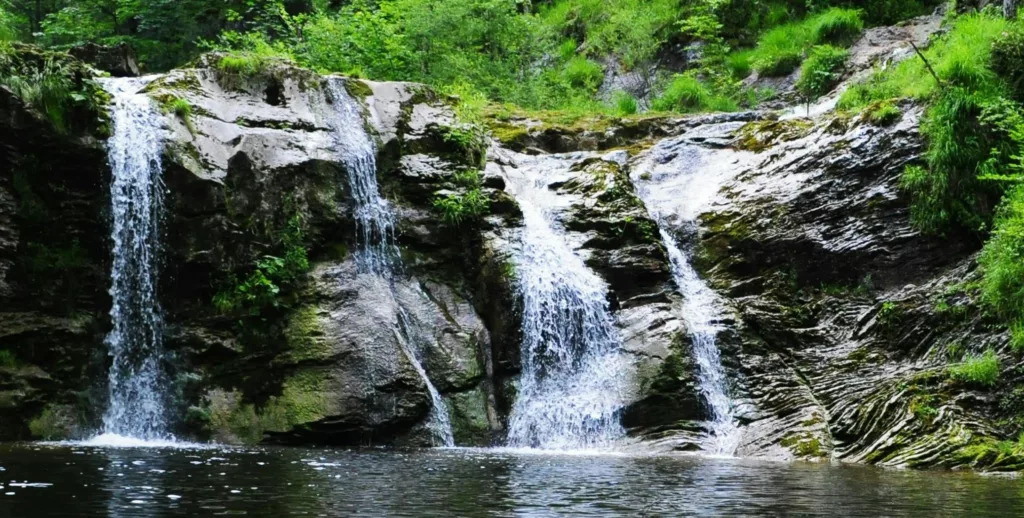
Placement is crucial. You want your waterfall to be visible, but also harmonious with the rest of your garden. Think about sightlines from different parts of your garden and even from inside your home.
Finally, consider the sound. The volume and tone of water falling can vary based on the height and flow. You can set up some experiments with different methods, buckets and a hose are great for this, to see what pleases your ear. A gentle trickle can be as soothing as a vigorous gush, and sometimes mixing the two can create a more interesting auditory experience.
How To Build Handmade Concrete Waterfall’s Foundation
How to build handmade concrete waterfall is so dependent on Getting the ground formation level right, it is non-negotiable. Without a solid base, your gorgeous waterfall could end up sinking or shifting over a short time. Start by marking out the area where the waterfall will sit. Clear away all the grass and topsoil, and save any rocks and any other hard material, any general garden debris goes to the compost heap or trash can. so you’re working with clean sub-soil.
Layer up with bricks or hard rubble and if you have more form some of the higher areas with rubble too, helping to start forming the shape. This creates a strong foundation that helps distribute the weight evenly. It’s like giving your waterfall a sturdy pair of shoes to stand on.
How To Build Handmade Concrete Waterfall and Installing The Pipework.
In How to build handmade concrete waterfall, think ahead about plumbing and electricity. Now’s the time to run any pipes or electrical conduits. This will save you a world of trouble later. Lay down any necessary piping before you start pouring concrete. A 1 1/2″ schedule 40 pipe is better coming from the bottom of your fountain to your hidden pump housing, you can always reduce it down. Your need your outbound pipe or pipes taking the water to the top parts where you intend the water to flow from. Using a small pool pump with a built-in strainer is the best choice, with easier maintenance. And budget friendly.
If you are thinking of adding a pond in the future, it would be advisable to leave a T-branch on your main return pipe with 2 accessible valves, it’s then easy to redirect a pipe to pick up the water from the pond. Also, plan for an accessible power source for your pump. Installing a hidden boxed-out area under the highest point. This will conceal the pump and pipe connections nicely, preferably with enough working room. Also keeping down the sound and allowing easy access for any service work. You may also want to consider a water supply that makes it easy to top up your waterfall.
Go over your hardcore and rubble compacting into the ground below is great practice. Use a tamper or your biggest hammer if it’s a small area. The goal is to make sure everything is tightly packed and stable.
Double-check everything before you move on. Plumbing, base stability, electrical setup—give it all a thorough look. It’s way easier to fix issues now than to backtrack later.
Mixing, Pouring, and Shaping the Base Structure
How to make a handmade concrete waterfall, relies on the base structure. It is like the backbone of your waterfall. You’ll want to get this part right to support all the detailed work that comes later. Mixing your concrete is the first step. Be sure to follow any instructions for the correct water-to-mix ratio if you are using any premixed bags of concrete.
Depending on how big your project is, a small mixer may be better. You’re aiming for a thick, just about workable consistency that’s not too runny. If you are using a bag mix it is best to add a little more cement, and definitely, by 100% add concrete fibers. It’s the easiest way to reinforce your project without the risk of rusting later and you don’t have to worry about coverage of any steel. Add the fibers slowly to avoid clumping
How to Build Handmade Concrete Waterfall Is All About Your Concrete Foundation
Pour the concrete over the outlined area, starting from the bottom up. Use your hands while wearing good thick rubber gloves, not the thin medical type, and other simple tools to shape the rough structure of your waterfall. Think of the large sections as the backbone, and don’t worry too much about imperfections at this stage. These will get covered by the next layers of colored concrete.
Maintain enough thickness. This is vital for ensuring stability when you start adding details later. You don’t want your structure to be too thin or it might crack under the weight of the water and additional concrete layers.
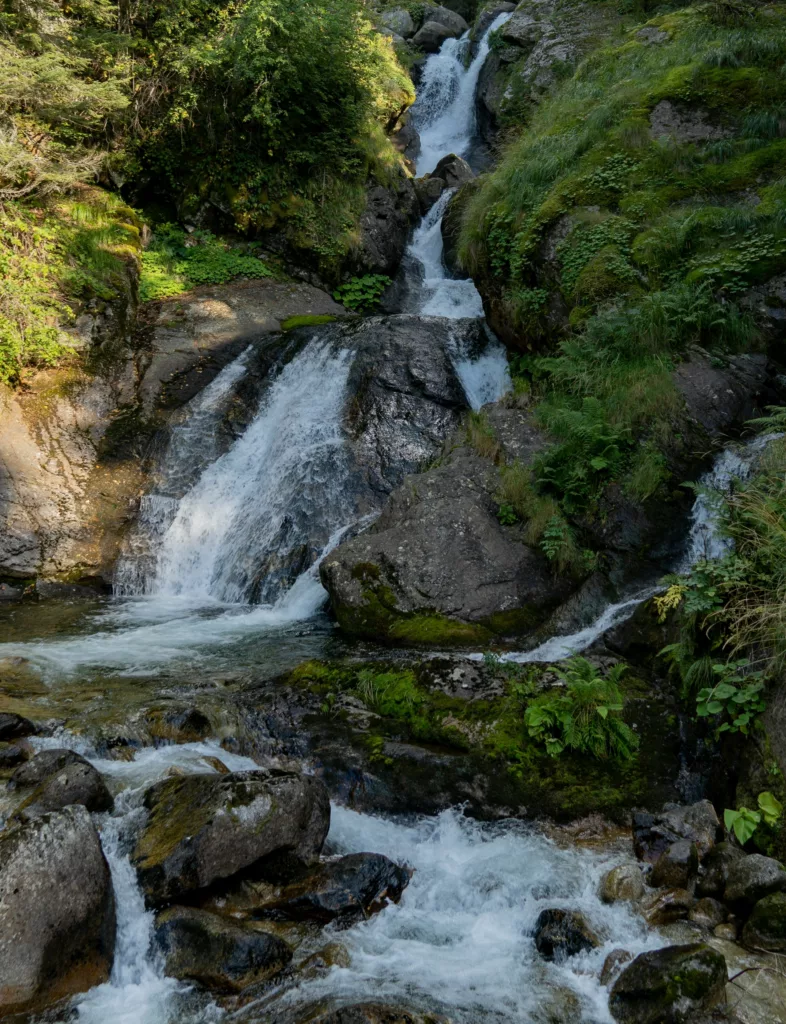
Work through one tier at a time. Start with the bottom, let it set slightly, and then go up to the next level. This tiered method gives each section time to cure a bit, which helps with overall stability. It can be useful at this stage to build in some real pieces of natural, flat stones for the spillways where the water drops down to the next level.
Don’t Smooth out the rough shape as this will act as a key for the top coat(s). While it’s still wet, with your gloved hand or a basic trowel just finish your rough shaping. The goal here isn’t perfection, just making sure everything’s set for the detailed work that comes in the next phase.
Detailing with Color and Texture
Prepping is the name of the game for how to build handmade concrete waterfall. Before diving into the fun part—adding the color and texture. Start by cleaning off any dirt or loose concrete from your rough structure, especially if it has been a while since you poured the first layer. Giving it a light rinse with water helps remove dust, and helps to ensure the next layer sticks well. If you’re looking for extra insurance on adhesion, a thin coat of PVA bonding can work wonders.
Get your colored concrete mixes ready. You’re going to want them a bit stronger than the base mix to handle the wear and tear from the water. This mix should be made with coarse and a fine sand blend and the extra cement, a little liquid PVA bonding agent, and your concrete fibers. A short fiber is best for this top coat and one that picks up the color. With most fibers you can go over the surface with a plumber’s torch to burn off any protruding fibers
Think of colors that blend well together; gritty browns, slate grays, mossy greens. Mixing these in different proportions can create a natural rock look that’s hard to beat. You might find it helpful at this point to make up a few small sample batches and practice how they blend and look together.
How To Build Handmade Concrete Waterfall Comes Down To Shaping and Blending
Hand-shape the look-a-like rocks. Using your gloved hands, and then hard sponges, begin forming the rocks and crevices. Sponges are great for achieving that realistic, weathered stone texture and blending the wet colors bleeding them together, similar techniques as artists use on their canvases. Build/throw in the colors then subtly blend them together to mimic nature’s randomness. Don’t be afraid to take your time here. If you’ve got a higher design, you might need to do this in sections, letting them set before moving on to the next part. But don’t stop at any point where water is intended to sit, always at least a little higher of these situations.
How To Build Handmade Concrete Waterfall With Good Water Ways
How to build handmade concrete waterfall comes down to focusing on where the water will flow. The paths where the water cascades down should be clearly defined even if you intend to create small pools.
If you did buy any pieces of real stone now is the time to break them out. Hopefully, you have some flat pieces with some texture on them, use these as stamps, by applying some release agent to their surface and pressing into the still semi-wet concrete. Or you might want to build these flat pieces into your design as the spillways. Don’t use any release on those if that is your choice, just wet them and a little wet cement slurry on their backs.
If you did incorporate small holding pools at different points, take extra care shaping these areas. Ensuring the concrete is solid but still has a natural look with the colors. Water always smooths out hard rocks in the real world. Fill any gaps or holes to avoid water leaking through and causing erosion. Don’t forget your bottom pool if you have no pond. Make this a good size so you can pump more water and have the desired acoustic ambience you want. Your pipe to your pump should be at the deepest point of the bottom pool, which needs to hold plenty of water.
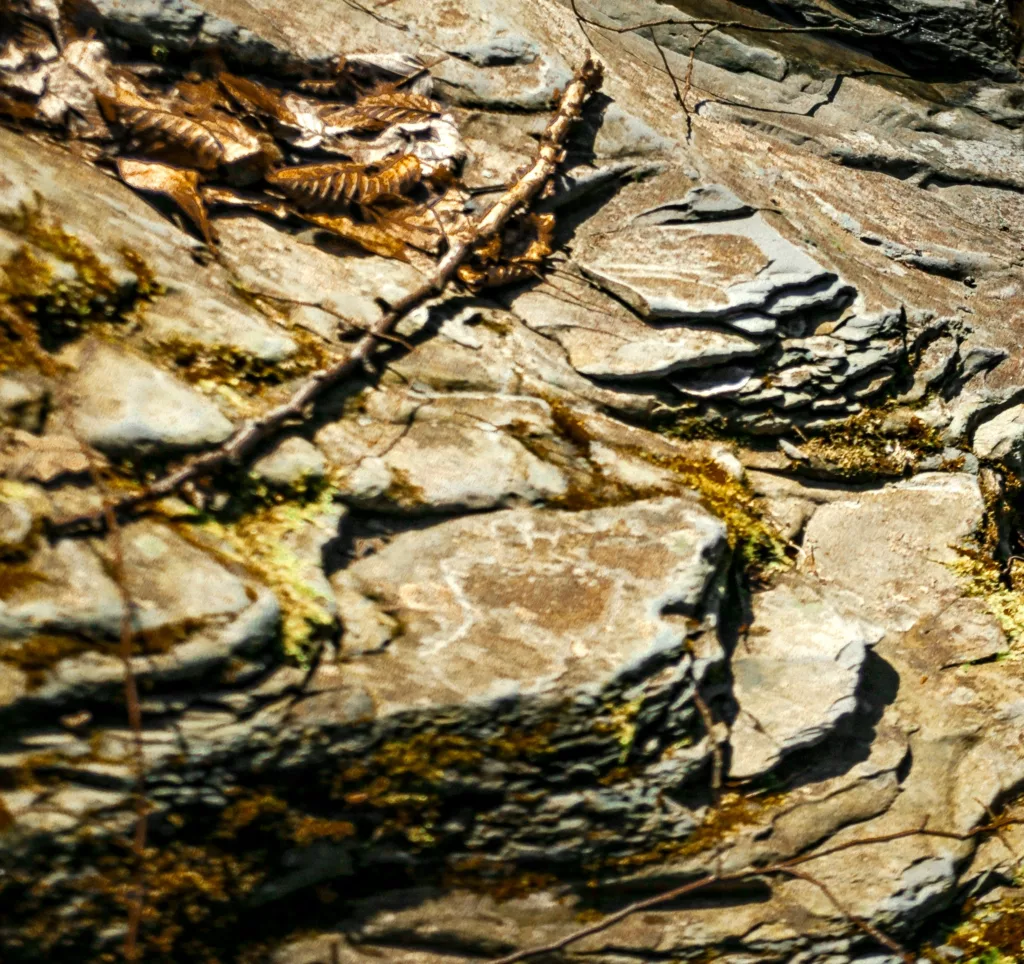
Check over your work. Before everything sets, step back and look at the overall design. Adjust any areas where the colors might not blend well or where the texture looks off. This is not your last chance to be perfect with the details, but it is the easiest way and best time. It saves you from having to complete another full or partial coat just to make your waterfall fully functional and unique.
If you are at all concerned about any leakage in your pooling areas, perhaps you should consider buying some liquid waterproofer and making up a little special mix to the manufacturer’s instructions for these areas. After all, how to build handmade concrete waterfall would be no good if it leaked.
Final Touches and Functional Integration
Once your structure is set and detailed, it’s time to move on to the finishing touches that will bring your waterfall to life. Start by cleaning up any excess concrete splatters or debris that may have accumulated during the build. A simple brush and some water should do the trick.
Now, prepare the spots for your plants. Adding good quality soil around and in between the rocks will create perfect planter pockets. Choose plants that thrive in moist environments and add visual interest. Think ferns, mosses, or even small flowering plants. Placing these strategically will not only beautify your waterfall but also help in softening the look of the concrete rocks.
Hooking Up Your Plumbing And Pump
Get your pump ready. First, make sure it can provide enough water flow and can lift (head height) the water to the required height. The one pictured above can handle the height and the volume, has a strainer basket all for $81.95 the last time I looked. Connect it to the plumbing you laid earlier, its always best to add ball valves to tweak the water flow and to isolate if any maintenance is required, and then follow the manufacturer’s instructions to prime it. You should also make sure you have a mesh cover over your outlet to stop rodents or larger pieces of trash.
Then make sure your power source is on and plug in your pump. Once connected, switch it on and watch the magic happen. Check for steady water flow and make any necessary adjustments with your new valves to ensure it cascades just right over each tier. It is also very important that enough water is in your bottom pooling area for the recycling, you do not want your pump to run out of water and fail.
Conclusion
Finish by stepping back and taking in the view and recall how to build handmade concrete waterfall came to be. Admire your handiwork and tweak any final details in the placement of your plants. Try and use plants with low water requirements, unless you managed to create deep areas of soil. Make sure everything looks natural and harmonious. The sound of flowing water, combined with the sight of your newly built waterfall, will transform your garden into a tranquil oasis.
Contact Us
We hope you find the information useful, but if you have any questions or need help, send us a message. You do have to sign in and confirm these days to comply with government rules. Sorry for the inconvenience.
Author Rob

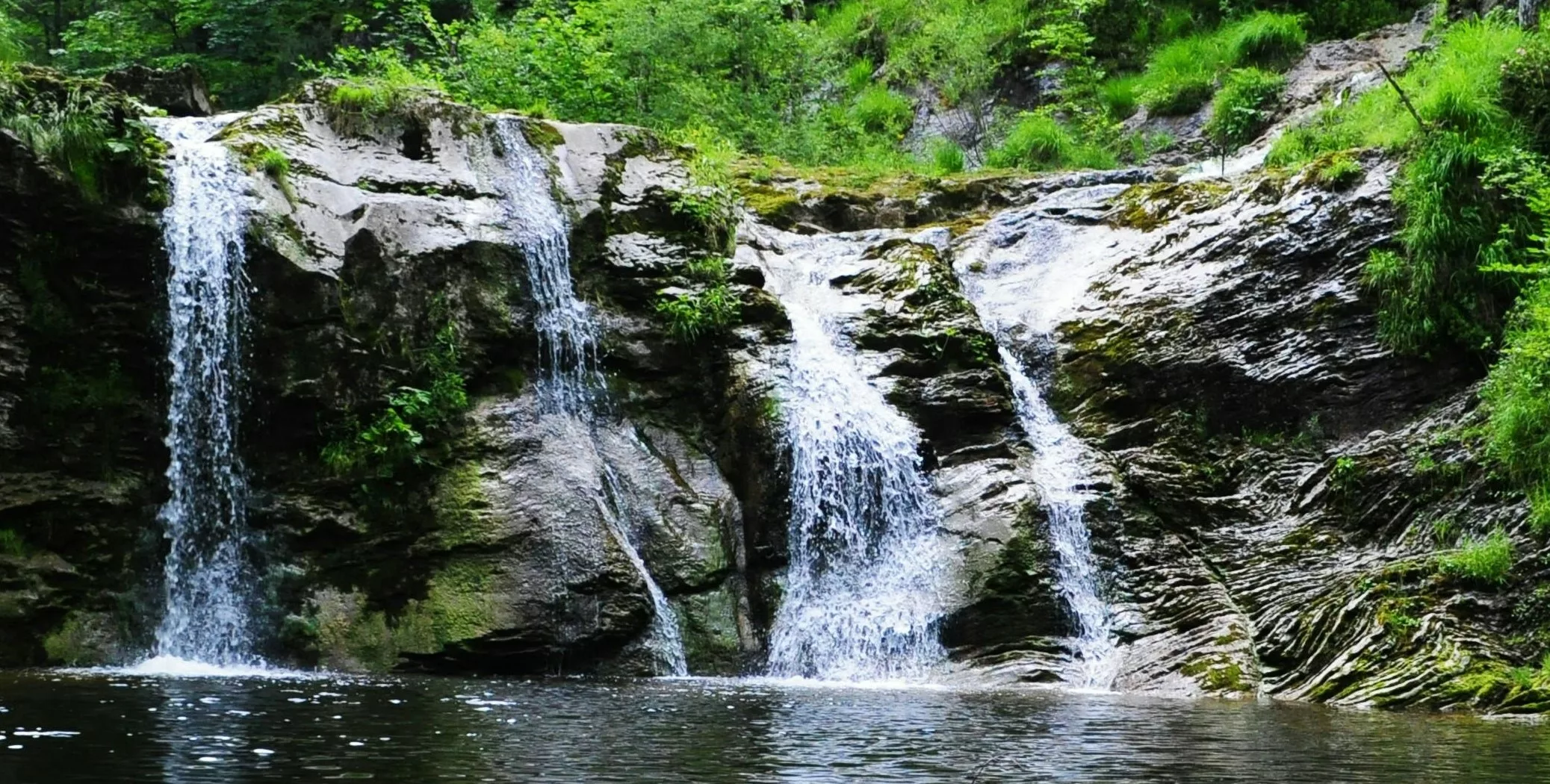
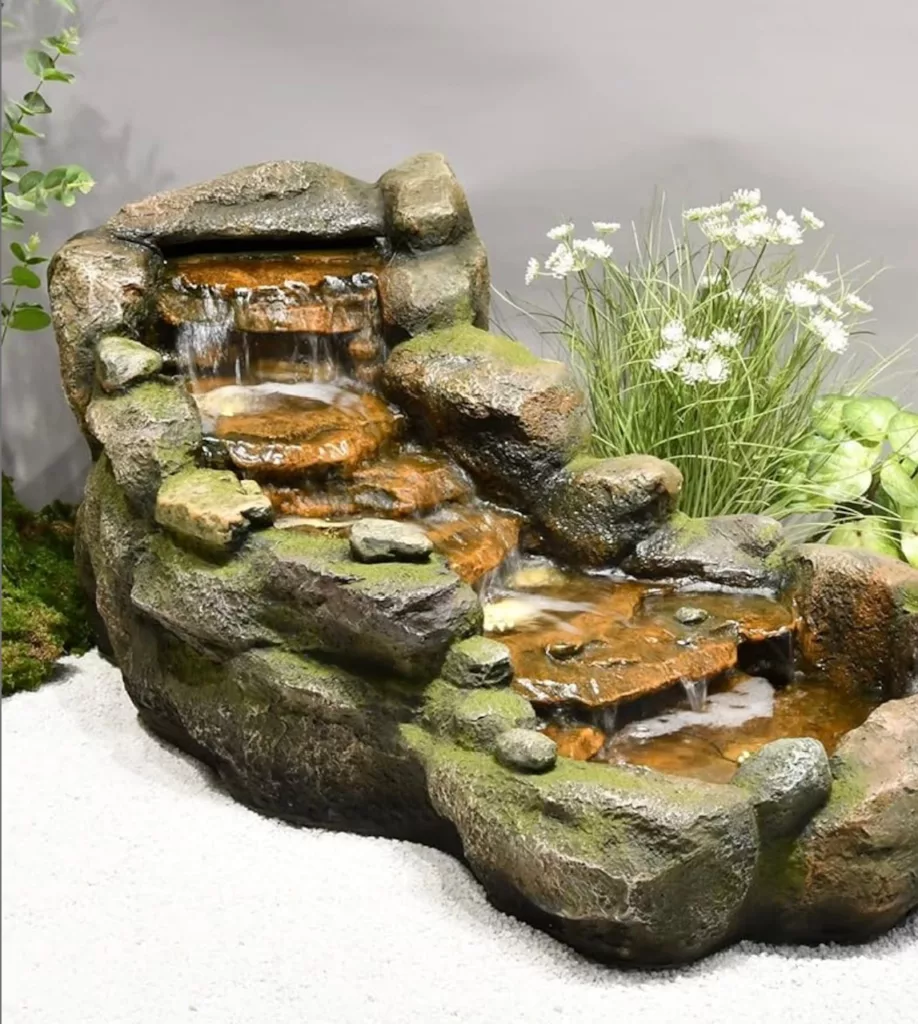

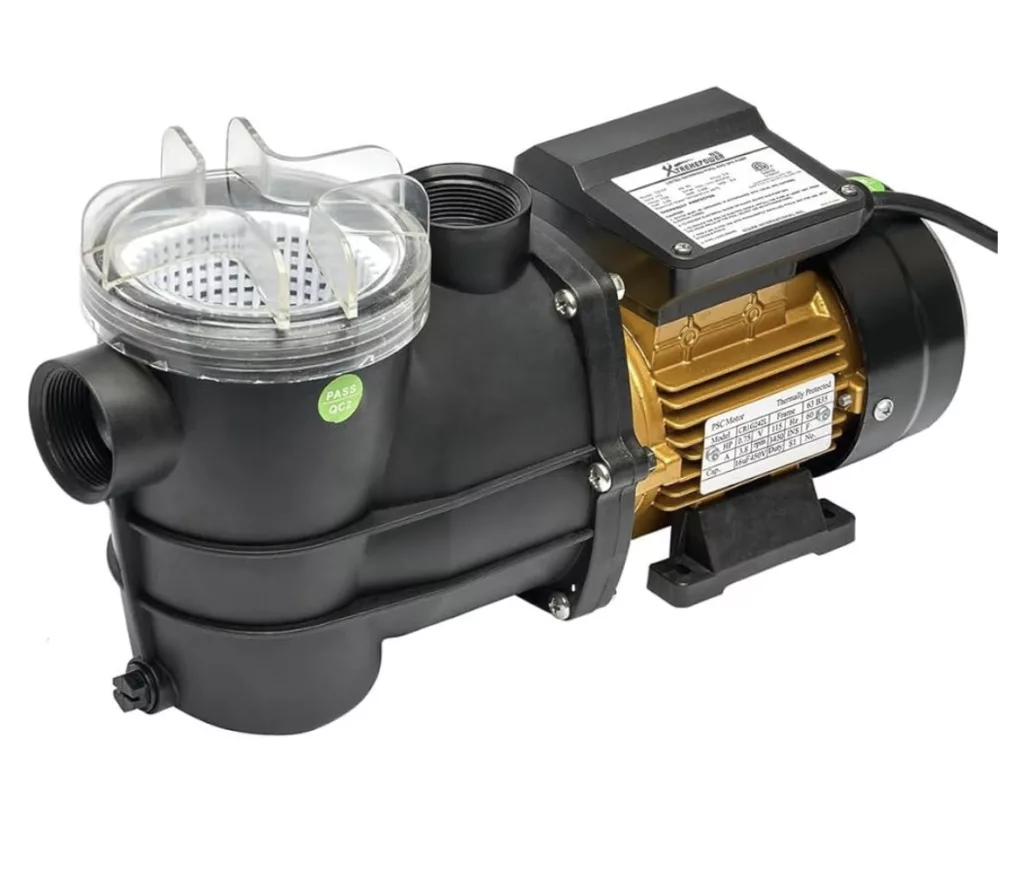
Thanks for the Great Simple Steps on how Handmade Concrete Waterfall. If I ever get to that backyard project this would be perfect for the corner of my yard. Any chance you have a checklist of materials?
Like this:
### Materials Checklist:
1. **Concrete Mix**: – Choose a quick-setting concrete mix suitable for outdoor projects.
2. **Mold Material**: – plywood or melamine board (to create the shape of the waterfall) – silicone or plastic sheeting (for smooth surfaces)
3. **Reinforcement**: – rebar or wire mesh (to add strength to your structure)4. **Water Pump**: – submersible pump capable of circulating water efficiently.
5. **Tubing and Fittings**: – PVC pipe and connectors to direct water flow from the pump.
6. **Gravel and Rocks**: – natural stones, rocks, or pebbles for aesthetics around the waterfall area.7. **Sealant**: – waterproof sealant (to protect against weather elements).
8. **Tools Needed**: – shovel – trowel – level – mixing bucket/drill mixer – saw (for cutting mold material) – measuring tape
9. **Safety Gear**: – gloves – goggles/mask
10. **Landscaping Supplies (optional)**: Depending on how you want to finish off the area surrounding your waterfall, consider mulch, plants, or decorative stone.
Feel free to adjust this list based on specific design ideas you have in
Hi Chris,
No, this list is too far off, as I edit the post I will add the list at the bottom.